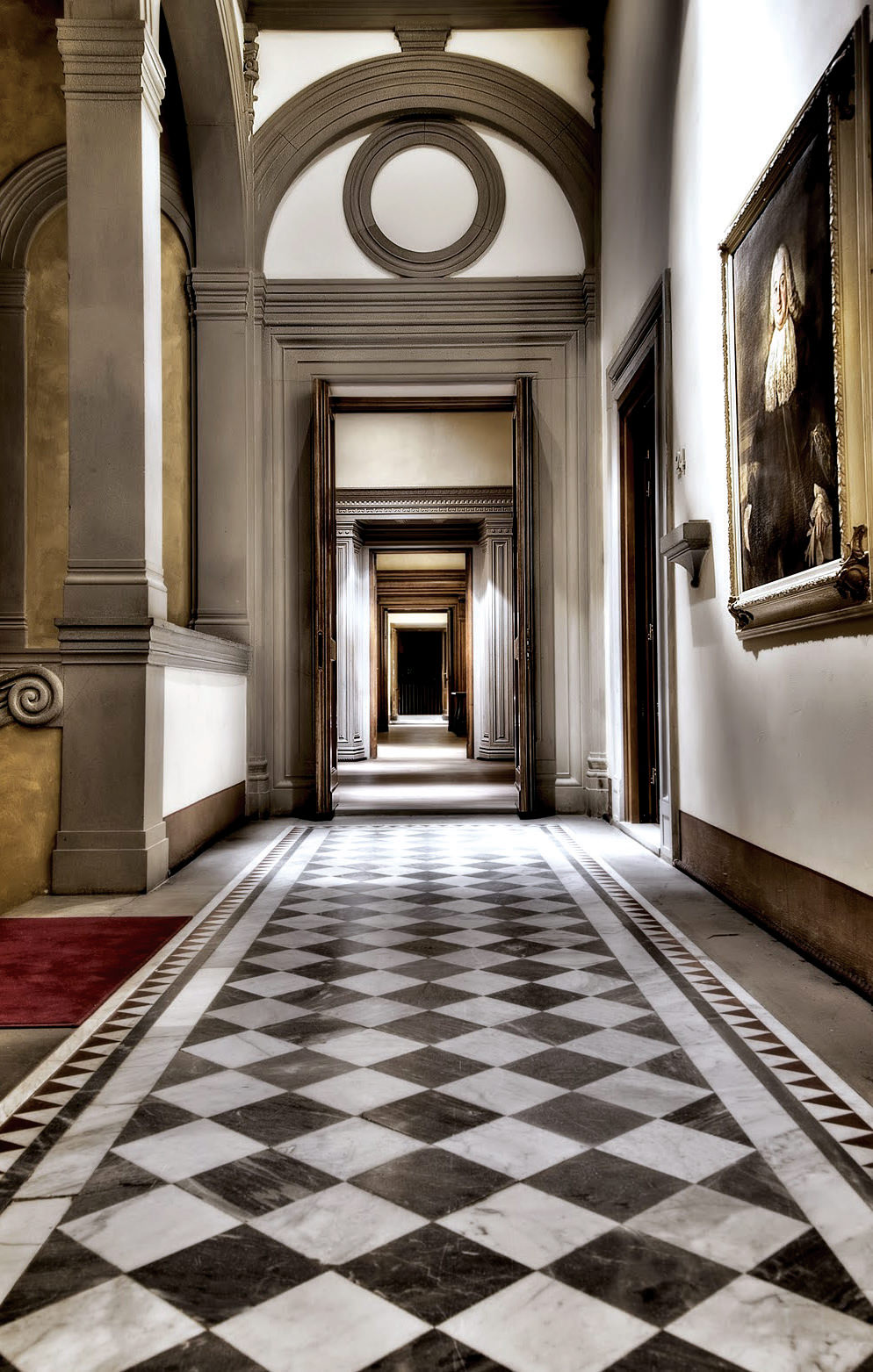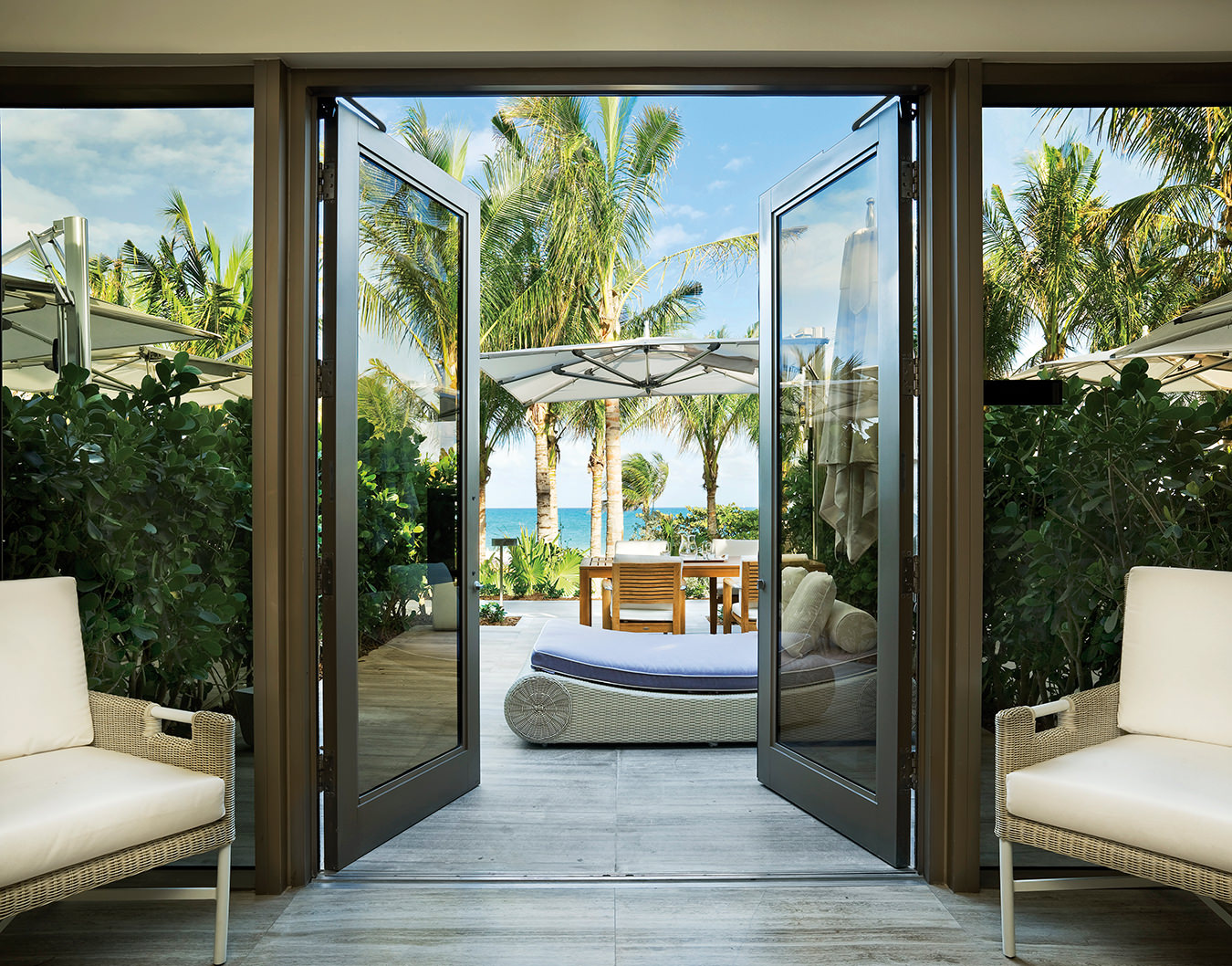-
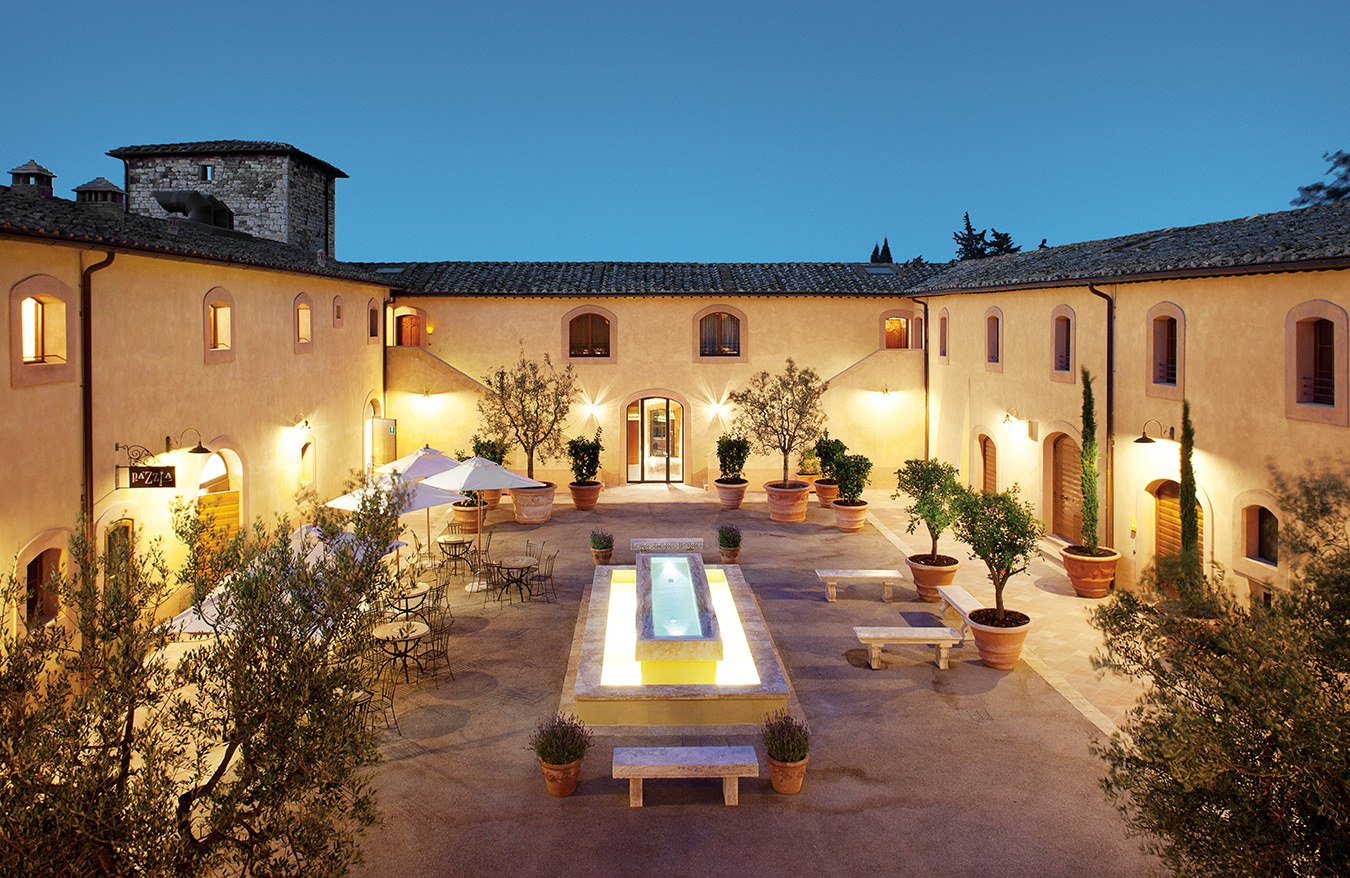
Castello di Casole is situated in 4,200 acres of the Tuscan countryside, amidst rolling hills and wild-boar reserves. The 41-suite luxury hotel and 28 farmhouses are part of the largest private reserve in Tuscany.
-
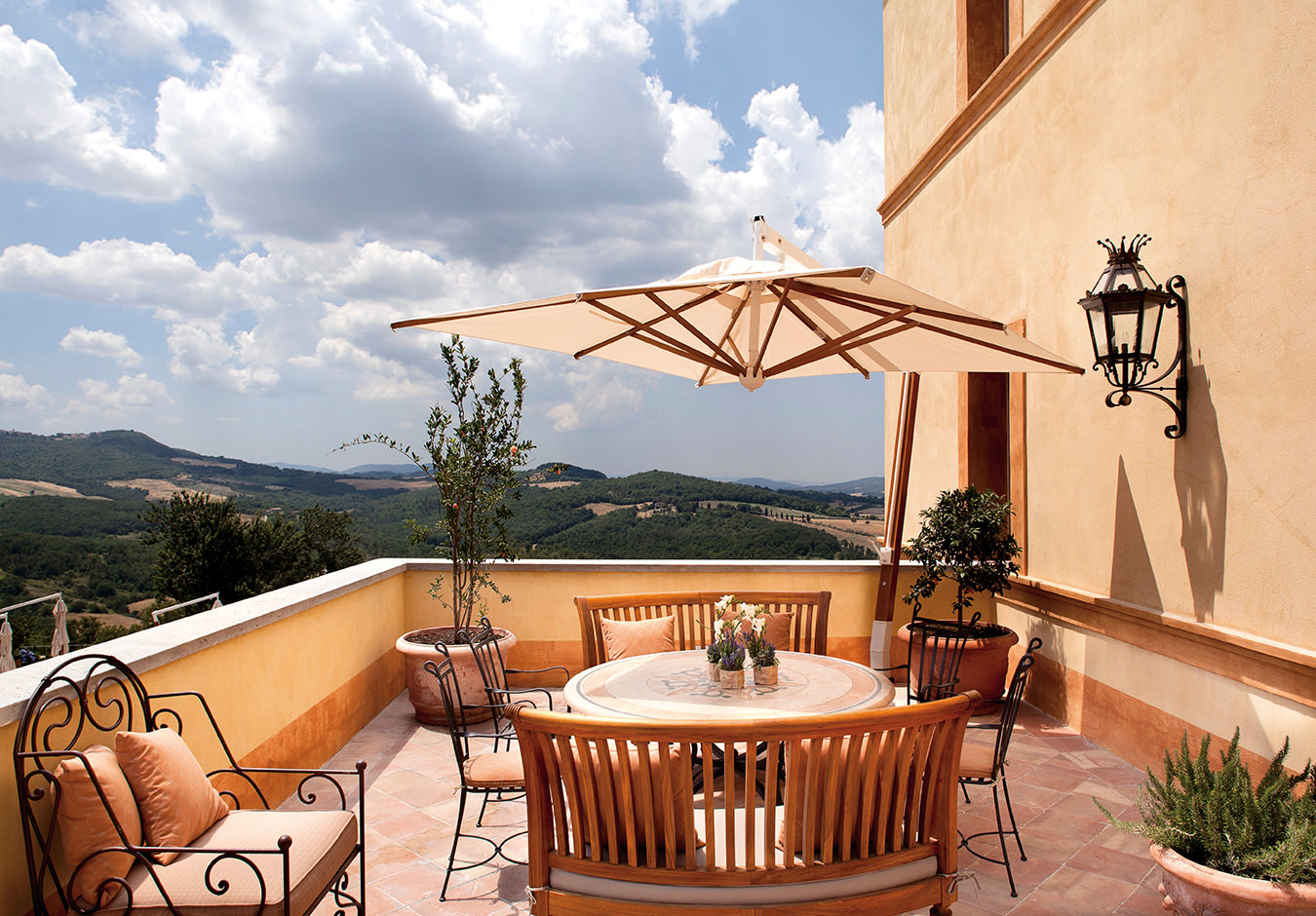
-
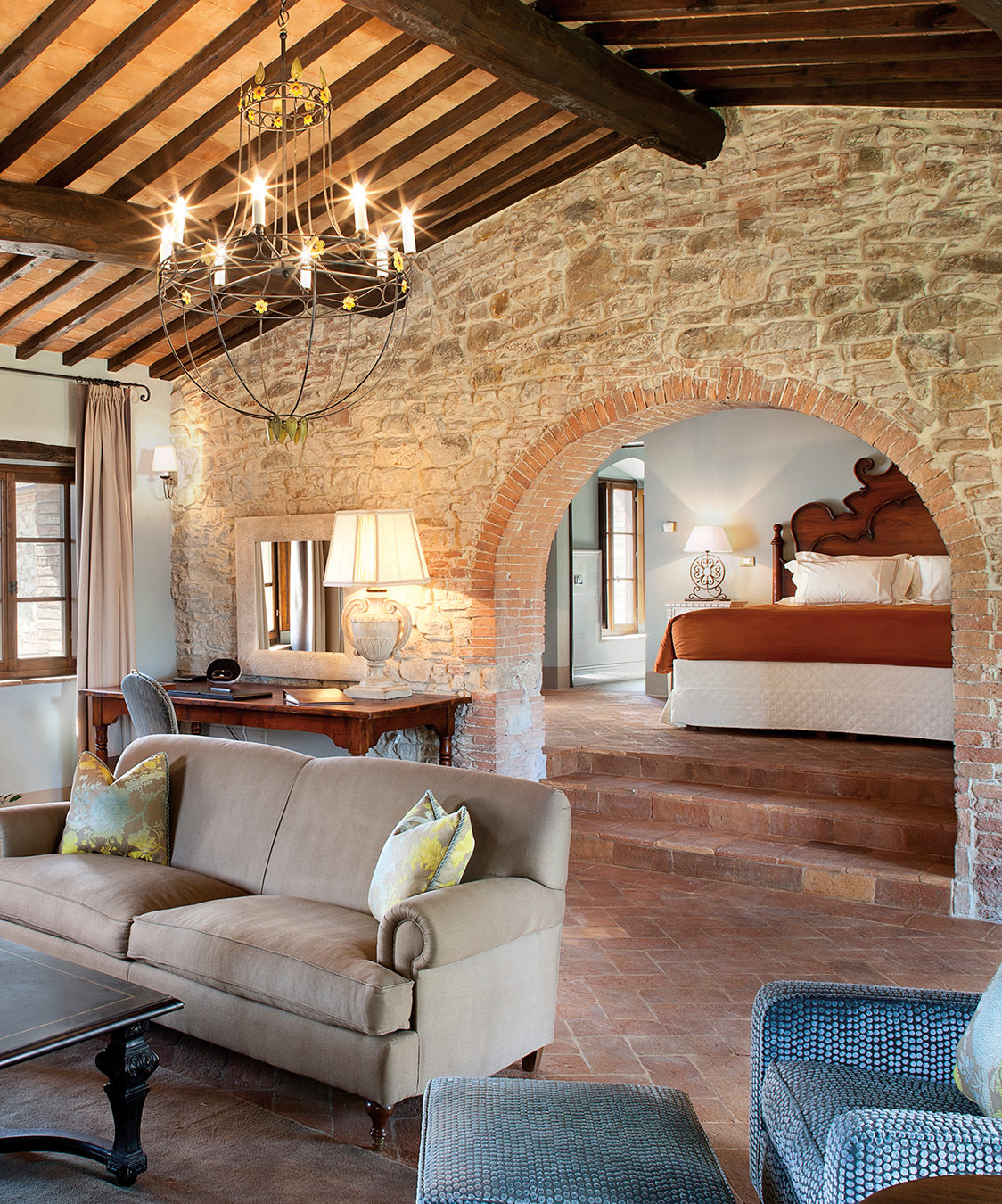
-
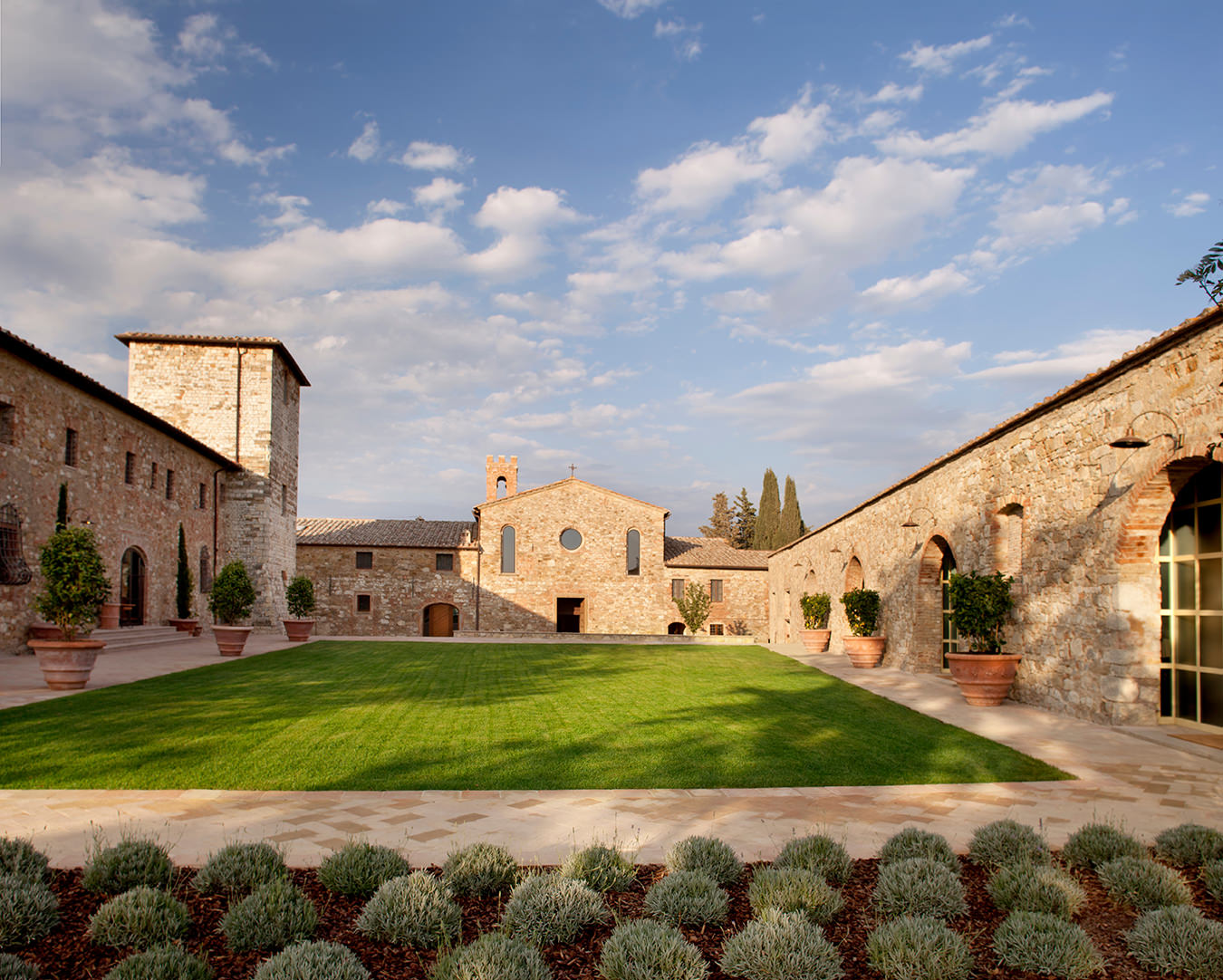
-
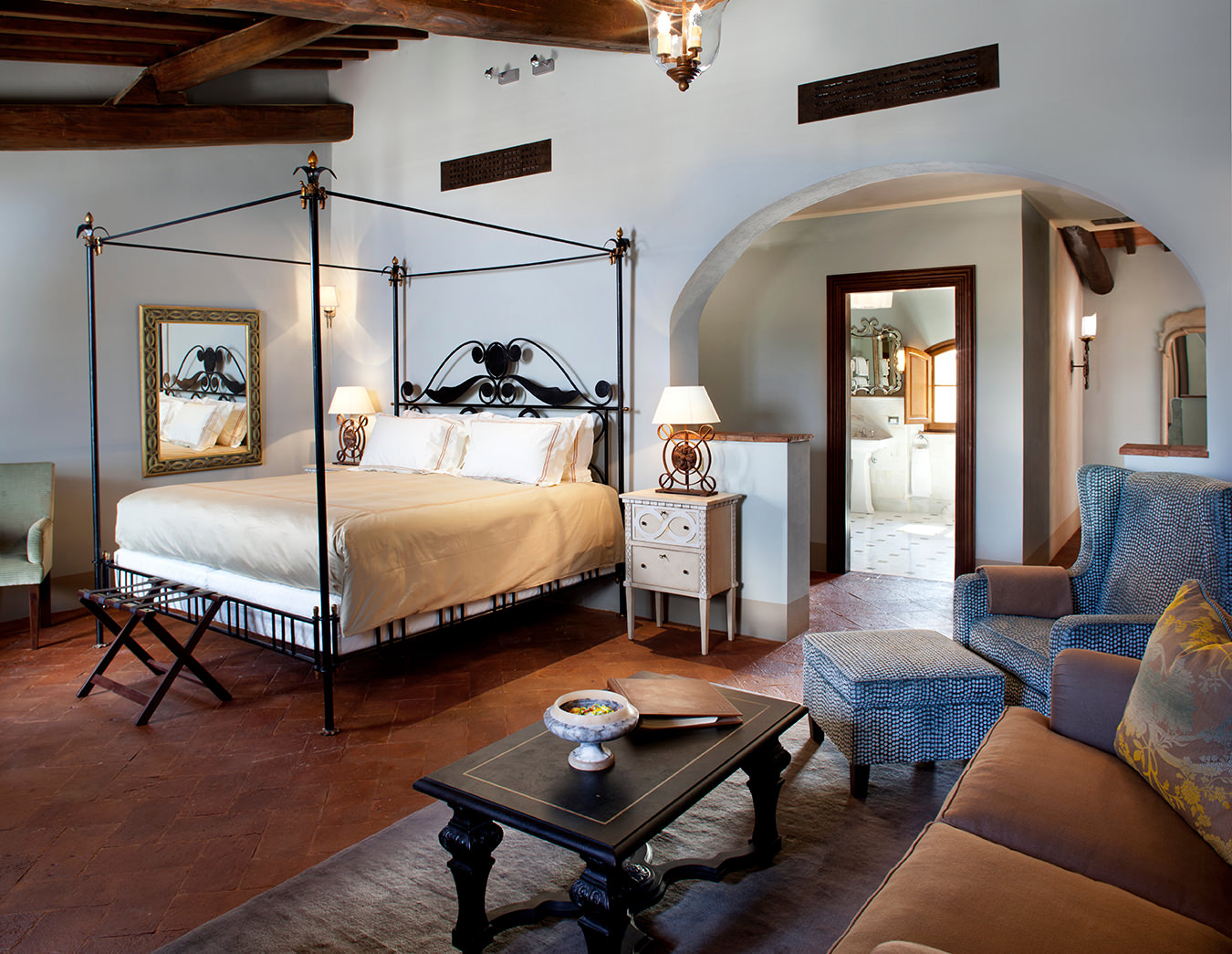
-
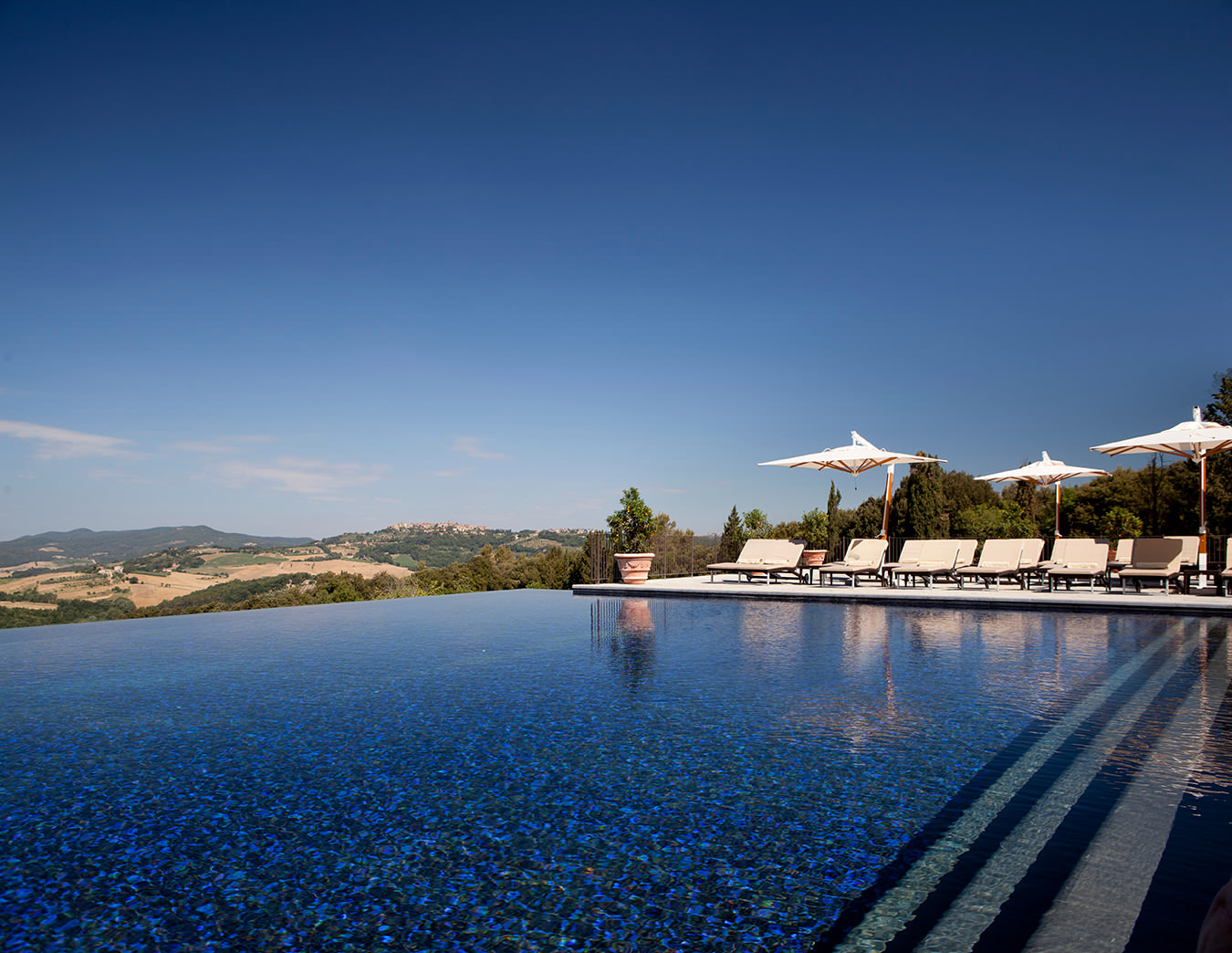
-
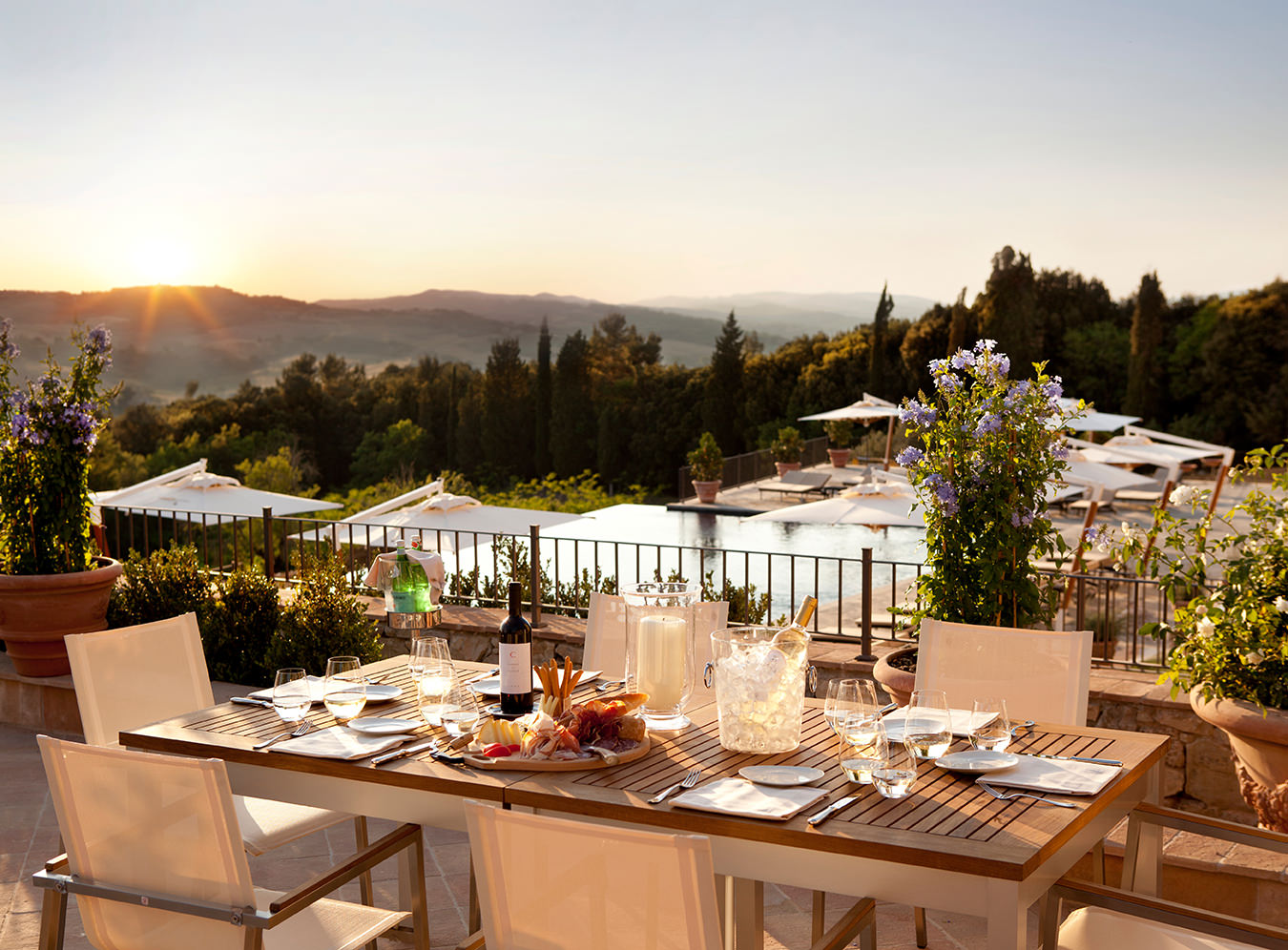
-
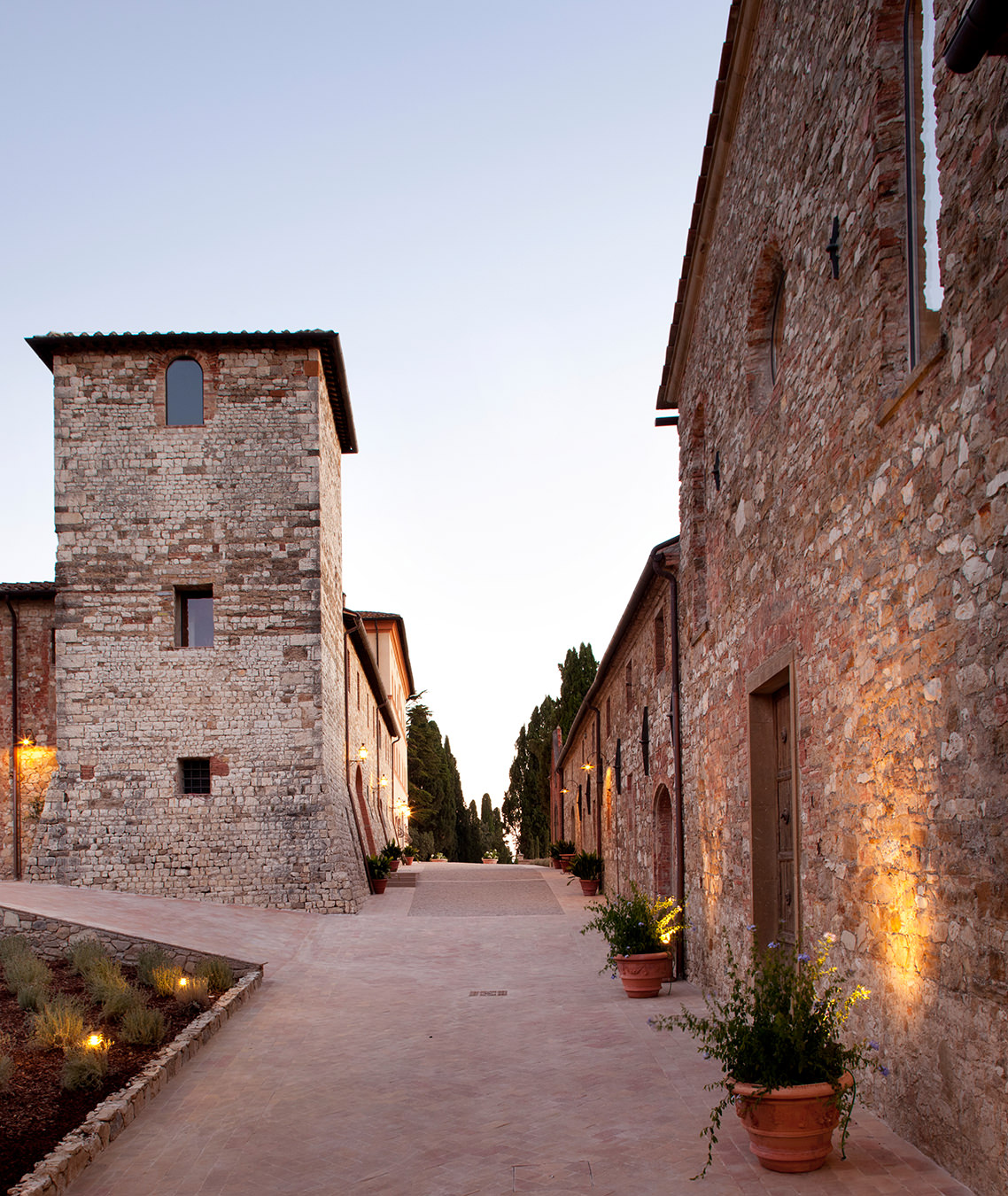
Castello di Casole
A hilltop Tuscan estate.
Halfway through the journey of my life, I find myself in a dark wood. The only sign that man has once been in here is an old marble bench, mossed over by time. I look downhill; I look uphill, where late summer leaves extrude the early afternoon sunlight. Beyond them, peeking over the horizon, I glimpse what looks to be a castle. I climb toward it.
When I arrive at the clearing at the hillock’s crest, I see a handsome building with a tawny stucco façade. It is indeed a castle. A broad marble staircase, of only a few steps but of certain grandeur, leads up to a white doorway that, in turn, opens onto a glowing lobby, the light of which leaks onto the patio where I now stand. The immense face is interrupted only by small windows that sparingly let in the baking Tuscan summer sun and keep miserly warmth in the winter. And had I not stopped to turn, to gaze at the hills in the distance from which I came, I would have missed a small bronze plaque beside the door that reads, “Castello di Casole, Costruito nel 998, Trasformato in Villa Borghese nel 1811, Restaurato nel 2012.” (Castello di Casole, built in 998, converted into a Villa Borghese in 1811, restored in 2012.)
Laboriously refashioned and painstakingly restored, Castello di Casole is in the portfolio of Timbers Resorts, a hospitality and fractional ownership concern (also a developer of boutique, private resorts, hotels, and residence clubs) based out of Carbondale, Colorado.
This castle is a 41-suite luxury hotel that is part of a much larger property that also includes 28 farmhouses that will eventually dot the surrounding countryside: 11 are original and restored, four are ground-up constructions but in an ancient style, and 13 still need to be built or restored. They are owned by an international consortium of fractional owners, each of whom is deeded, many of whom are American, some of whom are Britons, Germans, and Canadians.
None of the hotel suites are identical, owing to the peculiarities of 10th-century architecture. Some, like the Bargagli Suite, a three-bedroom, two-storey, 3,350-square-foot penthouse, are more grand than others. Some, like the one I’m staying in, are single level; others, like those occupying the tower, have winding staircases and hidden bedrooms. Besides the suites, there is the 5,400-square-foot Essere Spa (which occupies the former wine cellar), two restaurants (an informal one called Pazzia Pizzaria and a formal one called Ristorante Tosca), and a bar called Bar Visconti.
Perhaps no other country occupies so well defined a niche in the mind than Italy, and no region of Italy has so vast an empire in the nostalgia of foreign minds as Tuscany.
Because of stringent architectural regulation designed to protect Tuscany’s rich heritage—laws that preclude drastic or sometimes minute modifications to the original blueprints—the layout of the castle hasn’t much changed in the past half millennium. But beyond the actual walls of the castle, construction has been allowed. A scenic infinity pool has been built, as well as various patios and vantage points from which guests can gaze upon the landscape. The property comprises 4,200 acres, the largest private reserve in Tuscany. The hills are threaded with trails for mountain biking, jogging, hunting, and walking. A beautiful church from the 18th century doubles as a wedding chapel and yoga studio. There’s a Technogym, and croquet on the lawn.
The building has been many things over many years. One need only glance at any of the stone exterior walls to be made aware of its age. Irregular-sized bricks in various earthy colours seem more like a mosaic or a liquid swirl of masonry than the building blocks of an orderly load-bearing structure. This is the result of entropy and restoration over a thousand years. The castle that was originally built at the site was constructed as a Roman villa called the Querceto Manor. In the 19th century, what remained of the building was converted to a private home for the Bargagli family from nearby Siena. These were the estate’s glory years, at least as part of the community, and the currently restored farmhouses date from that period. In the late 1950s, Marquis Piero Bargagli (nephew to his better-known namesake and last family heir) decided to sell the estate. And in the 1960s, Luchino Visconti, the famous Italian director of The Leopard and Death in Venice, bought the decrepit property. (Rumour has it that Visconti housed his many mistresses here.) In 2005, Timbers bought the property and, for an undisclosed sum, made it new again.
The company succeeded. The pebbles that line the ancient courtyard are pristine. The walls of the ancient rooms are smoothly finished in burnt umber. One might call it a contemporary digestion of ancient boundaries. That description underscores a controversial element of Castello di Casole. From the vintage birdcages on the farmhouse table in the tawny-toned living room to the dormant chess sets in the lounge to the alabaster Q-tip containers in the bathrooms, Castello di Casole may as well have been a new build for all the history that shines through. I, for one, wish a bit of the gruff stuff of the past, cracked, imperfect, and unpredictable, was left to shine through.
Perhaps no other country occupies so well defined a niche in the North American mind than Italy, and perhaps no region of Italy has so vast an empire in the nostalgia of foreign minds as Tuscany. This foreign mindset makes Castello di Casole an irresistible destination, because it truly is one of a kind.
If the restoration has vitiated some of the historic charm of the rooms, it has done wonders for the Bar Visconti, whose handsome mahogany wainscoting and panels of green marble have been polished, revived, and reinjected with sprezzatura. Whether it is by design or simply providence, in the early evening, the ideal hour foraperitivi, the Tuscan sun, almost tangible, cuts through the window to alight and inflame the barman as he makes negroni.
But the moment in which I feel most in Tuscany, a timeless Tuscany untouched by either man’s image of it or my own expectation, is on a predawn adventure, on the hunt for wild boar. Rosy-fingered dawn is just beginning to touch the skies, and the fields of grass still hold last night’s dew. Castello di Casole is just a silhouette in the distance. And on the far side of the glade about my feet, I hear the grass rustle. The dew falls from the blades. A wild boar is running into the timeless forest. Its path is straight, narrow, and true.
As of February 2018, this property is now managed by Belmond.
_________
Never miss a story. Sign up for NUVO’s weekly newsletter.


